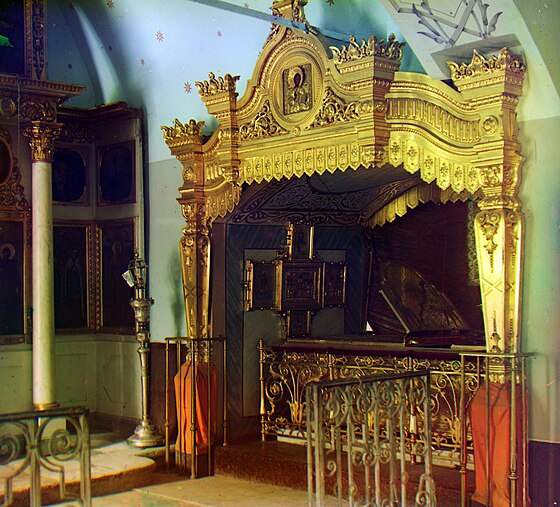Shrine
Shrines are sacred holy spaces dedicated to specific deities, demi-gods, ancestors, heroes, martyrs, saints or similar figures of respect, enabling these to be venerated and worshipped. Shrines occur in many forms, but there are two effects that they possess: isolated shrines that are found in natural places, possessing great power, and wayside shrines, that are commonly placed along roads or within communities. High temples and cathedrals have spaces within their environs that conform to either of these effects.
While the importance of shrines began to fall out of favour in Europe in the 14th century, this cannot represent matters in the game world. Because gods actually exist, and because the practice of praying and sacrificing to a shrine has tangible effects, shrines have maintained their importance into the 17th century and continue to exist everywhere.
Isolated Shrines
Shrines that are found within natural surroundings possess an unusual capacity to strengthen the faith and practical strength of clerical magic. Those whose beliefs conform with the shrine gain two experience levels when casting magic within 60 ft. of the shrine's presence, after a 15 minute period of prayer. The shrine confers no new spells upon the cleric; only those spells the cleric was already able to cast are affected.
Therefore, with regards to spells of divination, or should a cleric seek sanctuary from enemies, especially holy isolated shrines serve a great purpose. They can be difficult to locate, and difficult to reach ... but once known, a cleric can return again and again to the place to advantage the great power offered there.
Wayside Shrines
These are easily found and well known to locals, who are happy to provide directions. Taking the shape of decorated poles or pillars, high crosses, altars sheltered by a small roof, cairns, runestones, small fenced-in yards surrounding a gravesite or icon, these shrines may even be tiny houses with doors and room enough for one person. Different forms take precedence in their own part of the world, and according to their faith.
Anyone whose belief conforms to a wayside shrine, cleric or lay person, may benefit from the shrine's influence. Any community larger than a hamlet with two hammers will have such a shrine. The individual need only say a brief prayer, requiring no more time than a combat round, to gain a practical benefit from the shrine.
This effect is to grant a +2% bonus to the character's experience gained within the next 48 hours, as well as a one-time +1 bonus that can be assigned to any roll during that 48-hour period. Thus the player can choose to apply the bonus to a saving throw, an attack roll, the amount of damage done, an ability check and so on. This benefit is lost once it's used, but can be restored by returning to the shrine and repeating the appropriate prayer.
Reverence
Religious leaders tend to respect the shrines of other gods and persons, as open desecration threatens the local peace. That said, periods of religious war do occur in which iconoclasm against shrines is committed on a wide scale. Such times are difficult for every person, as the destruction of these shrines tends to increase the general bad luck experienced by the populace, as we might suppose.
It's up to the DM to decide what sort of shrines occur where. It's beneficial to occasionally locate shrines that specifically connect with the players' chosen religion,
